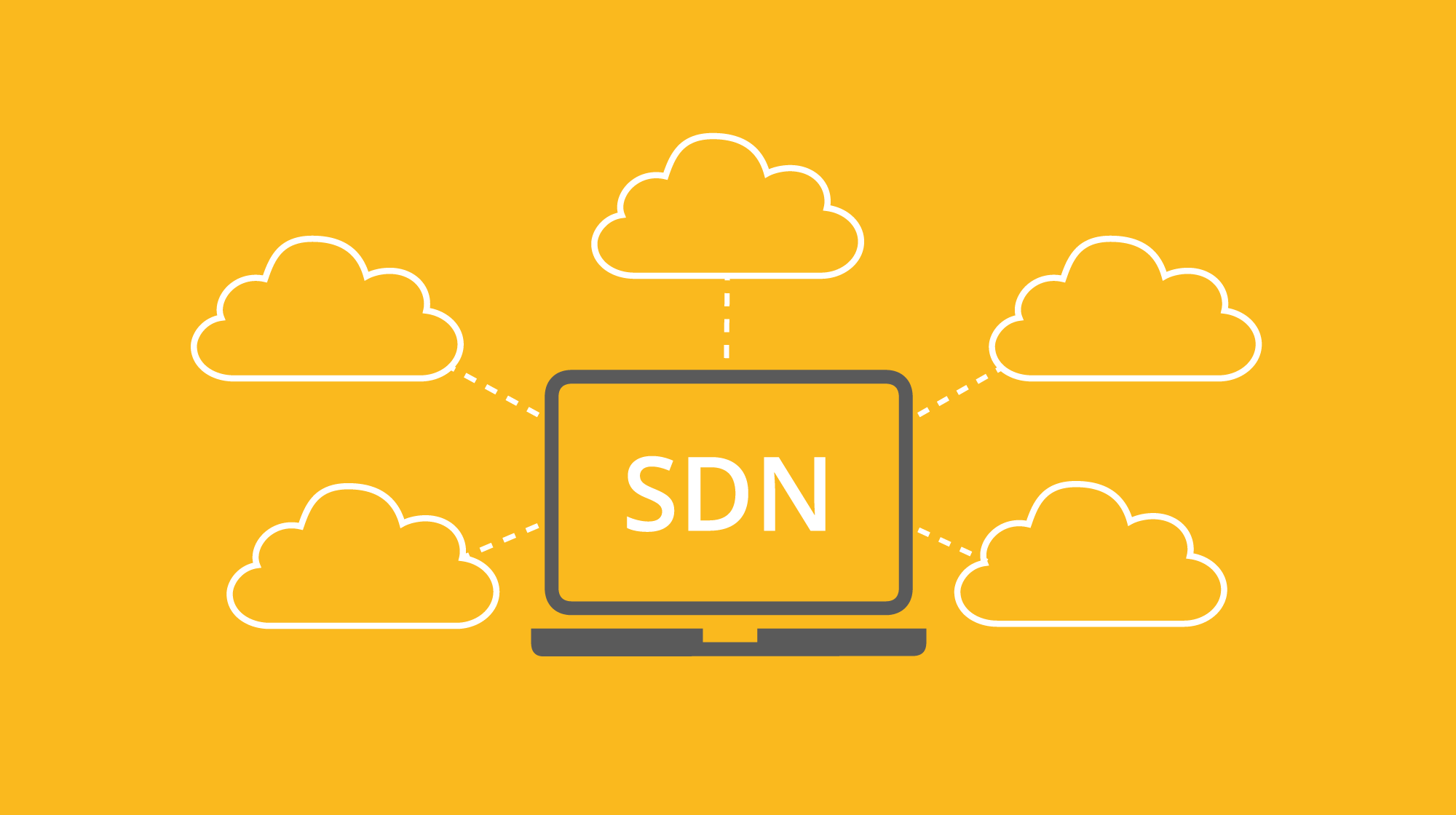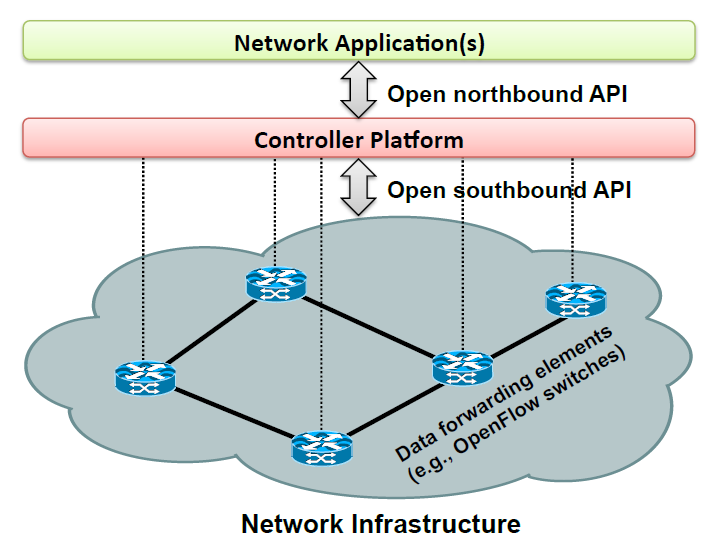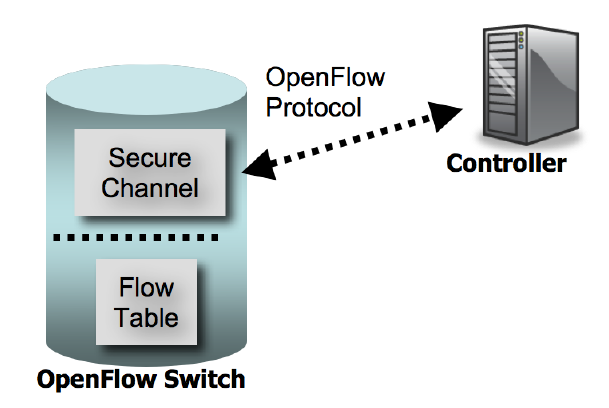Originally published on medium

This is not a state of the art post about the SDN and the OpenFlow protocol. This first part contains a quick literature overview around SDN (Software Defined Network) and the OpenFlow protocol. To skip right into the action you can go straight to part 2.
Software Defined Network
The concept of Software Defined Network was created in 2005, it stands for having all networks controlled and managed by software. This concept may be very handy to network administrators, allowing them to dynamically manage the network, making changes without the need to physically interconnect and organize the network.
One more refined way of defining Software Defined Network rests on the following four pillars:
- Decoupling of the data and control planes. Separating the control plane from the data plane.
- Forwarding decisions can be based on more information than just destination addresses.
- Control logic/software can be moved to an external entity.
- Network functionality is programmable via software applications running in conjunction with some type of network controller.
The basic SDN architecture diagram is:

The OpenFlow Protocol
The OpenFlow protocol allows programmers/network administrators/researches to run networking experiments on real hardware in real networks. The idea behind OpenFlow is to provide an abstraction of hardware functionality that would be compatible with most of the hardware available. A nice and quick explanation was made by Dr. G. Bernstein:
OpenFlow, its like an assembly language for switches.
The full OpenFlow Specifications are freely available for download.
The basic OpenFlow architecture consists of a switch OpenFlow, a controller, and a secure channel between them.

OpenFlow Switch
An OpenFlow Switch consists of at least three parts:
- A Flow Table, with an action associated with each flow entry, to tell the switch how to process the flow.
- A Secure Channel that connects the switch to a remote control process (called the controller), allowing commands and packets to be sent between a controller and the switch using
- The OpenFlow Protocol, which provides an open and standard way for a controller to communicate with a switch.
By using the OpenFlow Protocol an OpenFlow Switch becomes a dumb datapath element that forwards packets between ports, as defined by a remote control process.
Controllers
A controller adds and removes flow-entries from the Flow Table on behalf of experiments. Isolating the control plan in a logically centralized application, a programmer can deal with typical problems of software development and distributed systems like:
- Fault Tolerance
- Complex/volatile business logic
- Testing
- Efficiency
- Design
To create a controller that centralizes the application logic we will use the Ryu library. Ryu is a component-based software-defined networking framework, it provides a well-defined API to, among several other things, create network controllers.
On part 2, we will see a default implementation of a switching hub to understand how to build a simple SDN.